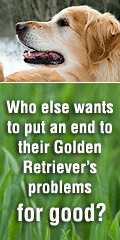What makes good dogs turn aggressive the second you put a leash on them? Having a dog that pulls and lunges at dogs and people presents a danger to others and a roadblock to your training efforts.
Exercise is essential for all dogs, and there are ways you can correct your dog's behavior so you can both get out and enjoy the fresh air. Walks don't need to be dreaded, just handled in a careful and consistent manner.
If your dog seems like he is about to become aggressive, divert him with a command like sit or down. This will keep him occupied and should reroute his attention.
If you are about to pass another dog, don’t tense up or pull the least taut. Your pet will be able to tell and he will think that you are scared, so aggression is much more likely. Animals pick up on our signals – just remain calm and relaxed.
Some dogs may require a gentle leader harness or muzzle. These should only be used temporarily until your dog learns not to lunge. If you have a dog who is a danger, they can keep others safe. This is the first priority.
If you have tried to curb leash aggression and your dog still misbehaves during walks, it is time to find a good trainer. You need professional help to stop this at once: not only is it disruptive to your own walks, it is dangerous to everyone and every animal you pass on the sidewalk.
Many dogs pull and lunge when on a leash. If your dog displays this very natural reaction to being on a leash, it is vital that you take action as soon as possible so it doesn't become either an irritating habit or a dangerous one.
The stay command is one of the most useful for your dog. While indicative of a well-trained dog, the stay command can also keep your dog safe in different settings. To help facilitate teaching this command, use treats and praise liberally. SitStayFetch can help you gain even better control over your dog.
To learn to stay, your dog first needs to know how to sit and/or lie down. When he masters this, staying is the next step. Begin by telling him to sit or lie down. As he does this, put your hand out and say, "Stay." Make sure you use a firm yet calm voice.
As soon as your dog obeys, say, "Good." Even if the dog only stays for a brief second, it is a great start. Praising can only help him learn more.
As he progressses, instruct him when it is time to move. Many people say "Come" or "Ok" to release their dogs. Again, make sure to praise him and give him a reward - this makes the training operation much easier and quicker.puppy potty training works especially well when accompanied by praise and goodies.
Gradually work on the length of time that your dog sits and stays before you give the release command. Make him work for that treat!
Optimal training should last about five to ten minutes at a time. Any more than that will strain your dog's attention span and counteract your efforts.
Any longer and your dog will feel like he’s in a marathon – he’ll get tired, cranky, and won’t want to listen. At first, you may have to repeat, "Stay," often to remind your dog, especially if they’re excited about their treat.
Soon, your dog will be able to stay even if you leave the room. Even if you phase out the treats, remember to praise your dog for this accomplishment.
Obtain more information on puppy training.



No comments:
Post a Comment